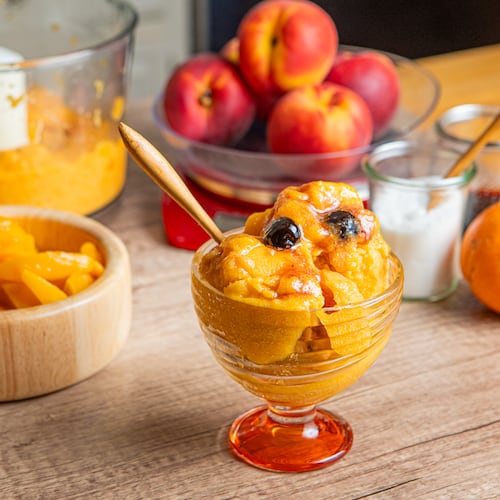I ate alfajores daily when I was in Argentina, grabbing a packet of the foil-wrapped confection whenever I saw one: at cafes, markets, gas stations, the concession stand at the zoo.
The sandwich cookies were utterly irresistible, made with soft cakes and a creamy dulce de leche filling, sometimes coated in dark or white chocolate.
When I returned home to New York, I filed them away in the same Buenos Aires-only part of my brain reserved for doing the tango (badly) in the park and eating dinner at 11 p.m. It never occurred to me to make them myself.
Then my first-grader tasted alfajores that a neighbor’s cousin brought back from Argentina, and confidently declared, “I’ll get my mom to make that.”
How could I refuse?
The problem was that the recipes I found online were for a different type of alfajores: two crisp, delicate shortbread cookies replaced the thick, soft cakes. (The dulce de leche filling remained blessedly intact.)
It turns out that the shortbread version is so popular online, in part, because the recipe used to be printed on the back of a cornstarch box. (The cookies rely on a good amount of cornstarch for their lovely texture.) People across Latin America make them at home, and they are not the same as the commercially produced, foil-wrapped ones I gorged on.
After much searching, I finally tracked down a cakelike recipe modeled after the foil-wrapped kind. I baked up a batch, along with another of the shortbread version as a comparison.
Then I took both to my neighbor’s house for dinner.
As the night wore on, the cakelike cookies languished while the shortbread sandwiches disappeared.
As good as the caky ones were, we all preferred the textural contrast of the buttery snap of shortbread (which I flavored with a little lemon zest) against the sticky, gooey, caramel-flavored filling.
The only thing missing was the chocolate coating, which is easy to add if one has the urge. But I like the more restrained dusting of coconut on the sides. Coconut haters can leave it off. Or bridge the coconut-chocolate divide by rolling the cookies in good-quality chocolate sprinkles, those made from actual chocolate, not wax.
I know that when I eventually return to alfajores-loving Latin America, I’ll slip right back into the habit of devouring those tender foil-wrapped cakes. And when I get back to Brooklyn, I’ll bake up the shortbread kind.
In the world of dulce de leche sweets, there’s ample room for both.
Alfajores
Total time: 4 hours, plus cooling
Yield: About 50 cookies
Ingredients
2 (13.4-ounce) cans sweetened condensed milk, labels removed
1 tablespoon/15 milliliters brandy
1 teaspoon/2 grams finely grated lemon zest
2 teaspoons/10 milliliters vanilla extract
1 cup/125 grams all-purpose flour
1 cup plus 1 tablespoon/165 grams cornstarch
1 teaspoon/5 grams baking powder
1/4 teaspoon/1 gram baking soda
1/2 teaspoon/3 grams fine sea salt, plus a pinch for dulce de leche
1/2 cup/100 grams granulated sugar
10 tablespoons/141 grams unsalted butter, at room temperature
2 large egg yolks
1 cup/100 grams finely ground dried coconut
Preparation
1. Bring a large pot of water to a boil, then carefully lower condensed milk cans on their sides into the water. Simmer for 3 hours 15 minutes, refilling with hot water as needed to keep cans submerged. Never let the water boil away, or the cans could burst. Using tongs, transfer cans to a rack to cool.
2. In a small bowl, combine brandy, lemon zest and 1 teaspoon vanilla.
3. In a large bowl, whisk together flour, cornstarch, baking powder, baking soda and salt.
4. In the bowl of an electric mixer, beat sugar and butter until light and fluffy, about 3 minutes. Add yolks and beat to combine, then add brandy mixture and beat until just combined. Add flour mixture, and mix on low speed until the dough just comes together.
5. Divide the dough in half and roll each piece into a log about 1 1/2 inches thick. Wrap in plastic and chill until firm, at least 2 hours.
6. Heat oven to 350 degrees. Line 3 baking sheets with parchment paper. Remove dough from plastic wrap and slice into 1/8-inch-thick rounds. Place on prepared sheet pans, then bake until edges start to turn golden, about 7 minutes. Transfer each pan to a rack to cool completely.
7. In a small bowl, combine dulce de leche with remaining 1 teaspoon vanilla and a large pinch of salt. Spoon the mixture into a plastic zipper bag and cut a corner off. (Or you could scoop it into a pastry bag if you prefer, or just use a spoon.)
8. Flip half of the cookies upside down and pipe a thick layer of dulce de leche onto bottoms (or use a spoon to spoon the mixture on). Top with remaining cookies to sandwich the dulce de leche in the middle. Roll sides in coconut. Eat right away, or store in the refrigerator until serving.
About the Author
The Latest
Featured
